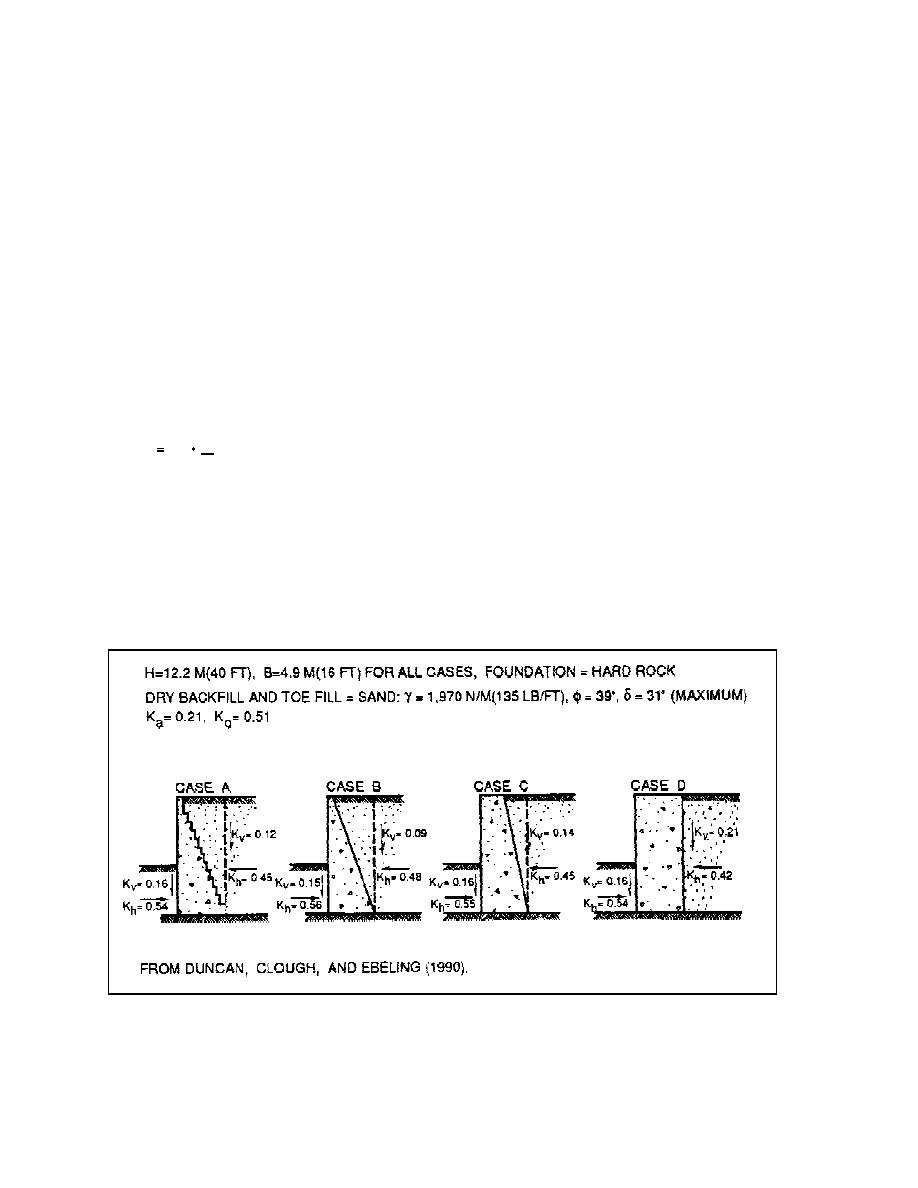
ETL 1110-2-352
31 Mar 94
γt = total unit weight of backfill
c.
Shear force - finite element analyses.
(1) To develop an improved understanding of the
H = wall height
interaction between gravity walls, their foundations,
and their backfills, an investigation using finite ele-
(2) Analyses indicated that the gravity walls
ment analyses was conducted (Ebeling et al. 1992;
would move only a very small amount during place-
Ebeling, Duncan, and Clough 1990). The analyses
ment of the toe fills and backfills. As a result, the
demonstrated that the backfill settles relative to the
earth pressures on the backs and the fronts of the
wall and develops downward shear loads on the wall.
walls are close to those that exist at rest. Even so,
Some examples are given in Figure 1, which shows
settlement of the backfill relative to the wall as it is
the results of finite element analyses of four walls
placed behind the wall is sufficient to generate a
founded on rock and retaining dry backfill. In Fig-
significant amount of shear force on the wall. Values
of Kv range from 0.09 to 0.21 for the four cases
expressed in terms of a vertical shear coefficient Kv,
shown in Figure 1.
which is related to the shear force on the vertical
plane through the heel of a wall by the following
(3) Parametric studies demonstrated that the most
equation:
concrete gravity walls on rock foundations are the
1
γt H 2
(1)
Fv
Kv
inclination of the back of the wall, and the number of
2
steps in the back of the wall. The following trends
were observed:
where
(a) For low walls, the value of Kv increases with
Fv = shear force on the vertical plane through the
increasing wall height because more backfill compres-
heel of the wall (force per unit length of wall)
sion occurs due to self-weight of the backfill. The
resulting increase in differential movement between
Kv = vertical shear coefficient (dimensionless)
Figure 1. Results of finite element analyses of four walls founded on rock retaining dry backfill
2



 Previous Page
Previous Page
